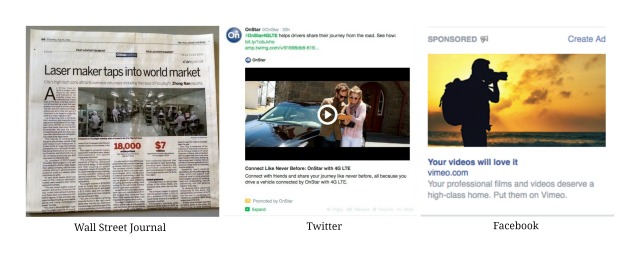We’ve written before about paid, owned, and earned media channels. Simply put, paid media is an advertisement–content that you develop and pay someone else to publish somewhere whether in a newspaper or online. Owned media is content you develop, publish and own — like a brochure, product sales sheet or your website or blog. And earned media is what we usually refer to in public relations. In the PR world, we use the “free” (unpaid) or earned media to help our clients tell their stories. Typically this is done by developing trusted relationships with the media and providing them with solid, factual news and information for potential stories or articles. Unlike paid or owned media, once you have supplied the background information to a reporter you have no control over the content or whether or not it will be published. This is why earned media offers third-party credibility that paid advertising or owned media simply cannot compete with.
Amplification of earned media in the pre-digital age
Before the explosion of the digital age and social media, when a client landed a big article in a major newspaper (earned media), we would pay to have reprints of the article made and we would include it in client news kits, distribute it at a trade show and share it with their board members or potential donors. We might even frame the article for the client so they can hang it on the wall in their organization. Each of these uses allowed us to leverage this third party credibility and reach a wider audience. Back then this was considered standard practice in public relations.
Amplification of earned media today
Nowadays when a client lands a big story, you can bet we’re tweeting or posting the story (along with a link) on our client’s social media platforms. We also post it in their website newsroom. We might even link to it in a blog post. All of these are examples of how we can amplify earned media using social media and through a client’s owned media (website or blog).
Paying to play with earned media
There’s also another way that companies can amplify their earned media and that’s through the use of paid content on social media channels or online. Usually this content is very clearly labeled “sponsored content” or something similar. But other times it’s not so clear, and the lines between earned media and paid media can get a little fuzzy for the readers of this content as well as how it might be categorized by the client (PR versus advertising). (In the print media, you occasionally see something known as an “advertorial” that’s similar to online paid content; content that looks like an actual newspaper story but in very fine print at the top of the page includes type that reads “paid advertisement.”)
The ethics of earned and paid media
In a recent article by BurrellesLuce, they mention that the FTC is hoping the publishing and advertising industry will develop “best practices” for “…distinguishing between editorial and sponsored content….”
In our firm that distinction has always been very clear. Rule #1 is to keep editorial content and advertising separate. We have different team members handling PR and earned media and other team members handling anything that involves paid media.
Once you cross the line and pay to control the message and promote your content, you are no longer in the PR world—it’s advertising pure and simple.




